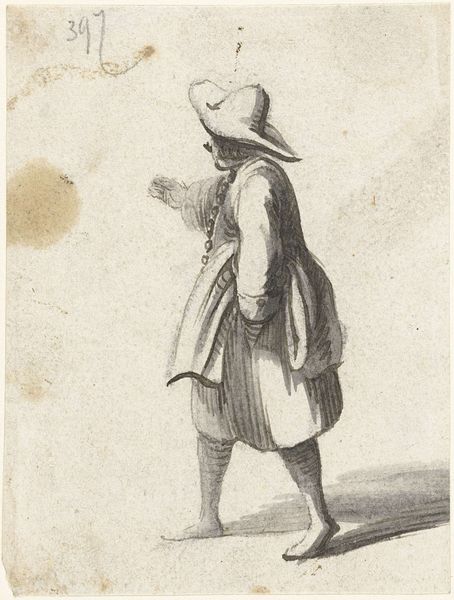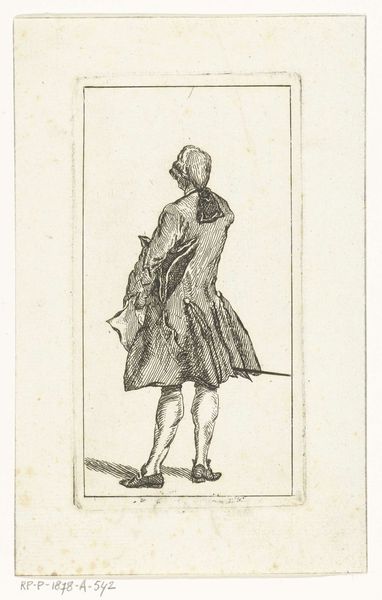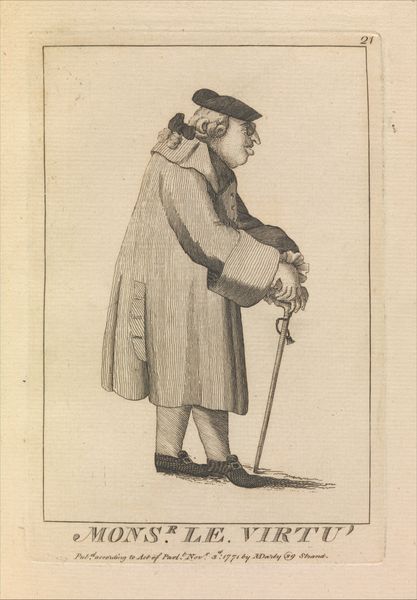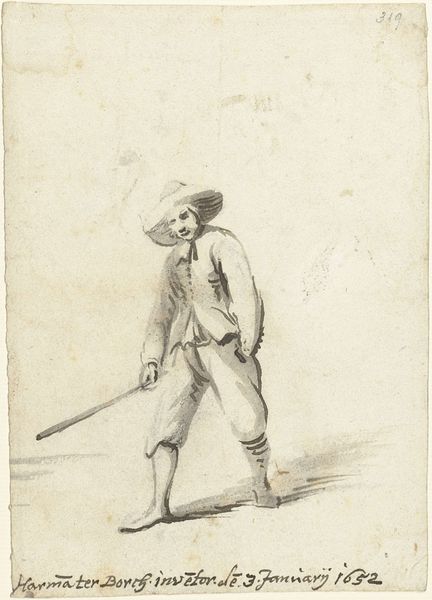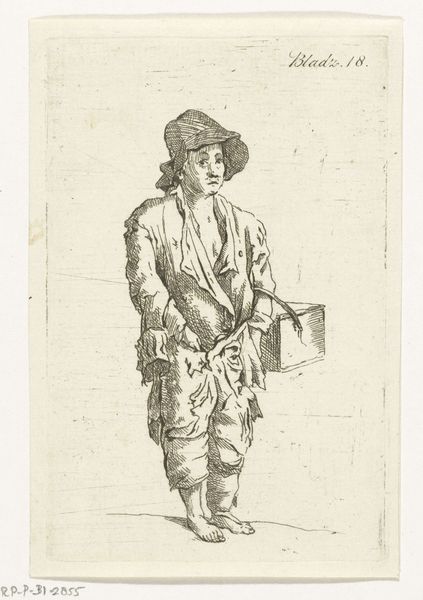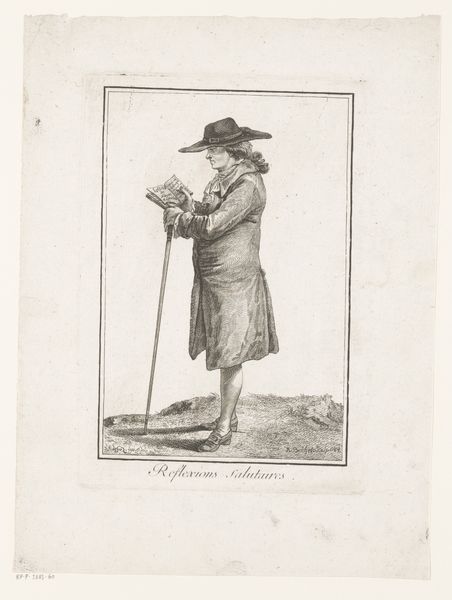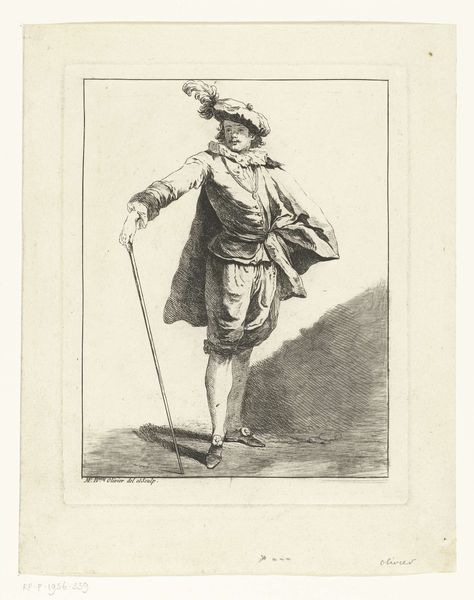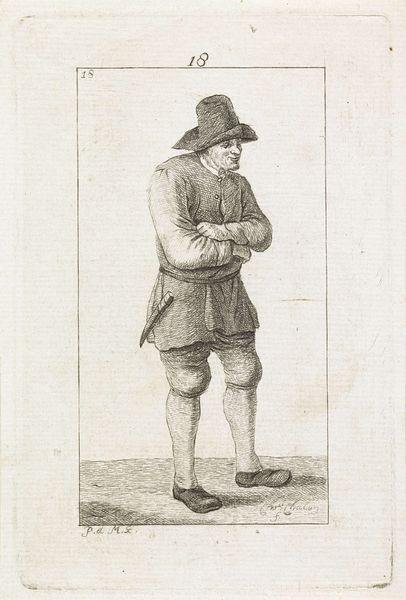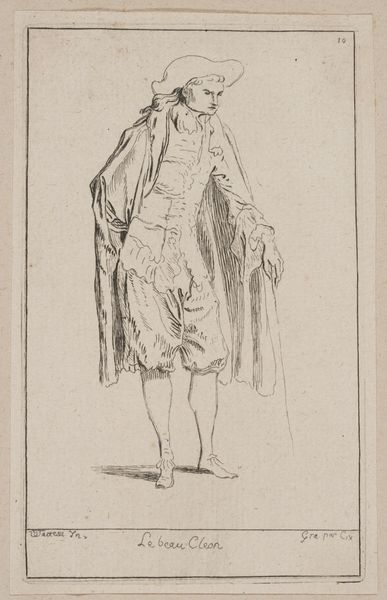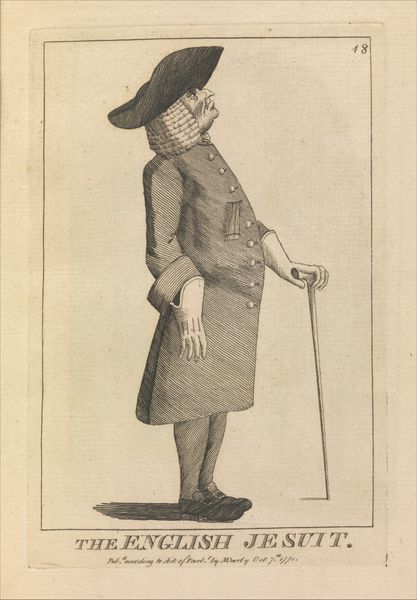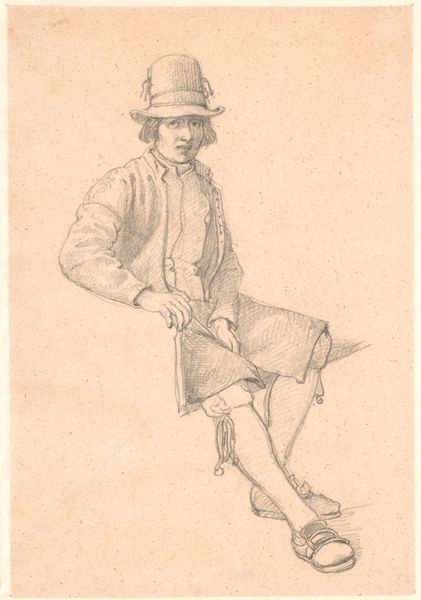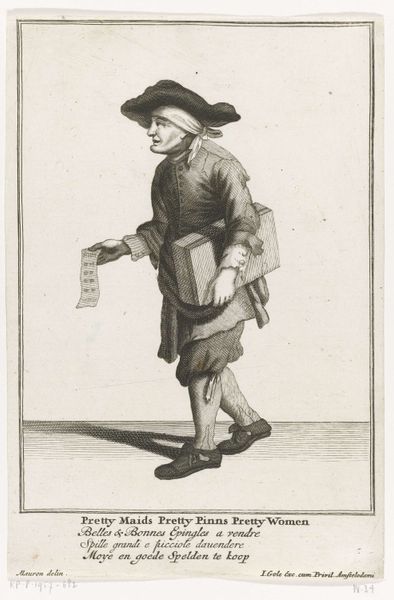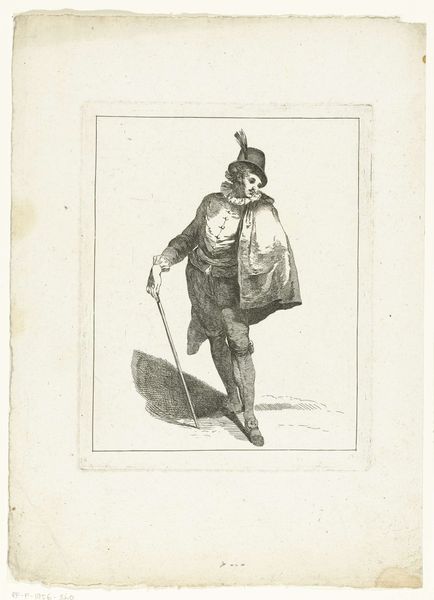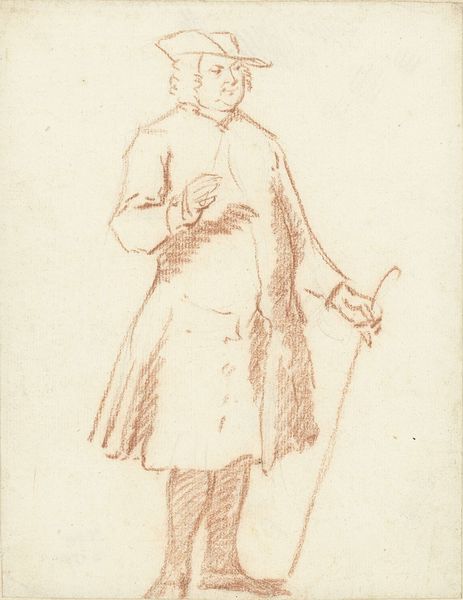
drawing, paper, ink
#
portrait
#
drawing
#
pencil sketch
#
figuration
#
paper
#
ink
#
romanticism
#
ink colored
#
sketchbook drawing
#
genre-painting
Dimensions: height 194 mm, width 122 mm
Copyright: Rijks Museum: Open Domain
Curator: Looking at this lovely drawing by Abraham van Strij, executed between 1763 and 1826 using ink on paper, one is struck by its delicate yet confident lines. Editor: It’s a remarkably restrained piece, isn't it? There’s almost an aloofness to the figure; the turned back, the suggestion of a landscape we can’t quite see. A sense of romantic yearning, perhaps? Curator: I agree, and what captures me is how van Strij, in these simple means—ink and paper—so expertly conveys the texture of the fabric, the fall of light on the man’s clothing. The economy of the materials, its very accessibility, is deeply compelling. Editor: Absolutely, yet this accessibility also points to larger issues of social representation and artistic patronage at the time. Who was this man? What labor does his dress imply, and what social strata might he occupy? It makes you wonder about the class dynamics inherent in even seemingly simple genre scenes. Curator: It really brings into focus the context in which drawings like this circulated. It prompts us to think of art beyond just aesthetic value. Editor: Yes! Art is rarely created in a vacuum. By understanding the history of art and visual culture through identity, gender, race, and social issues we create a bridge that connects art history and contemporary theory. It allows a new space of thought. Curator: Indeed. Van Strij's economical approach here allows for a deep connection to his materials. He emphasizes the inherent qualities of ink and paper in creating this captivating genre portrait, that elevates a simple act of creating to great expression. Editor: And by interrogating these visual cues, and acknowledging its historical placement, it prompts us to reflect on power and representation not just in 18th-century Netherlands but even today. Curator: A wonderful reminder that the act of viewing is always an active one. Editor: Precisely! Thank you.
Comments
No comments
Be the first to comment and join the conversation on the ultimate creative platform.
